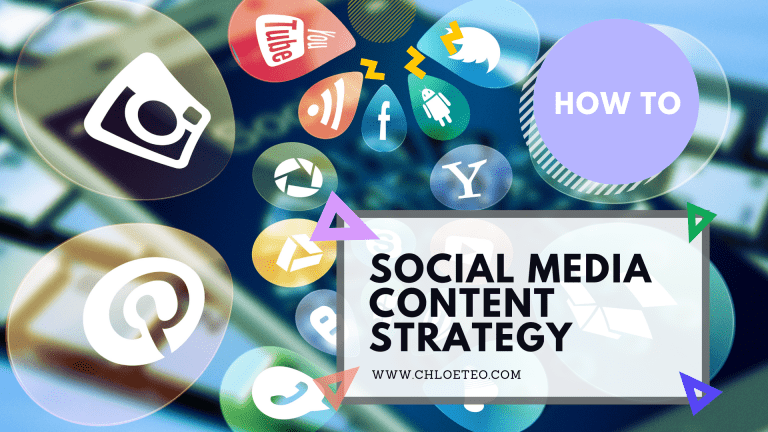How to Create a Channel Sales Strategy – Blueprint for 2022
Are you thinking of implementing a Channel Sales Strategy for your business? If you have a brilliant product and would like to exponentially expand your customer base, a Channel Sales strategy could be the answer to bringing your business to the next level.
Being a Channel Sales Manager myself, I believe that a Channel Sales model is one of the most efficient sales models out there as I have seen how it can help businesses scale.
In this article, we discuss what a Channel Sales model is, the pros and cons of this sales model and a quick start blueprint you can use for creating a Channel Sales Strategy for your business.
What is a Channel Sales model?
It is a sales model that distributes your product or service to the market through third parties. Here is a list of the common types of channel sales and their roles in the Channel Sales model.

- Distributors – A company that purchases directly from the manufacturer as part of the supply chain. A distributor acts as an intermediary entity to other entities in the supply chain, either to wholesalers or resellers/retailers
- Wholesalers – A wholesaler purchases from the distributor in large quantities, and their role is to distribute these products to resellers/retailers
- Resellers – A company that purchases product to resell to end customers at a profit
- Affiliate Partners – An affiliate partner promotes products on their website or social media and earn a commission from each sale. Some examples include bloggers, Youtubers or Instagram influencers.
- Retailers – A company that owns a physical storefront to resell products to the customer (i.e independent retailer, departmental store)
- E-commerce Retailers – A company that owns an e-commerce website that sells directly to the customer
- E-commerce Marketplace – A website that customers can find different vendors selling products to the customer (e.g. Amazon)
Channel Sales vs Direct Sales
Most companies start with a direct sales strategy before having a channel sales sales strategy. So, what’s the difference?
A direct sales strategy involves hiring sales reps and creating a sales team to sell directly to the end customer. Another example of a direct sales strategy is if you have an e-commerce platform, and your customer buys from your website.
Should your company Implement a Channel Sales Strategy?
There are different factors to consider if this sales model is the right one for your business. Below are a lists of pros and cons comparing a Channel Sales vs Direct Sales Model.
Channel Sales Strategy Pros

1. Accelerated Growth
You get the opportunity to have huge leverage with this sales model. In a direct sales model, your growth is limited by the number of sales reps you hire or the number of retail storefronts your business has.
2. Less Costly than a Direct Sales Model
With a direct sales model, your business takes on all the risks and costs involved. Your company has to hire and train sales reps to reach out to more customers. If you have a consumer product, every additional retail storefront you expand to involves rental and employee costs as well.
3. Reaching out to New Markets
You can expand your market as your channels will have customers in a different industry, or even a different geographical location. It is a good way to test a market in a different country while not having to physically set up an office there.
4. Increased Brand Awareness

Having more sales channels also serve as a marketing tool to help promote your product. When customers see your product being sold in more locations, it raises brand awareness and trust in your brand. Having your product in a reputable store or sold by a reputable partner also increases your own brand’s reputation.
5. Utilising the Channel Partners’ Resources

A channel partner can also provide resources that you require in your sales cycle, for example, providing delivery to the customer, or technical expertise in the case of software products.
Channel Sales Strategy Cons
1. Less Control over the Sales Process
With a direct sales team, you get full clarity on current sales pipelines, close access to customers feedback on your product and be able to build closer relationships with your customers. However, with channel partners, you will have less control over the sales process as they do not work for you, but rather it is a partnership.
I have also written an article on Customer Relationship Management (CRM) software (7 Best Salesforce Alternatives) if you are looking to improve sales processes.
2. Potential for Conflicts

If you have a direct sales team, there are risks of conflicts amongst your channel partners and direct sales. This can lead to messy situations within the company and even internal conflicts. There are also risks that your channel sales partners will have conflicts with each other.
3. Risks of Misrepresentation
A channel partner represents your brand. If they provide wrong information and mislead the customer, it can hurt your brand reputation.
4. Challenging to implement with more complex products
If your product is more complicated (i.e A software with many functions, features, and troubleshooting tips), it will take a longer time to enable the partners and onboard them. A comprehensive training and onboarding plan will be required, and partners need to be willing to commit the time to it.
When is the right time to implement a Channel Sales Model?
So how do you decide on the right timing to implement a Channel Sales Model?
If your business is still in the early stages and your product is still new and in need of fine-tuning, a direct sales approach will work better. This is because you want to hear customers’ feedback directly so that you can make the necessary improvements on the product.
Once you have a product and a growing base of happy customers, you can consider implementing a Channel Sales Model to expand your outreach.
How to create a Channel Sales Strategy
If you have decided that a channel sales model is the right one for your business, let’s get down to the details of how to actually create a channel strategy for it.
1. Define the Ideal Channel Sales Partner

The first step is to define what your ideal channel sales partner is. Here are a few questions you can ask to create a definition of your ideal channel sales partner
- What are the types of channel sales partners best suited to help you promote your product? Is your product more suited to be sold online, or do they require a sales rep to explain the product to the customer?
- Is their target market a right fit for your product? Do they have the same target audience?
- Do they already have a customer base in your target market?
- Do they have the right resources to support the sales process?
- What other products are they selling? Does it complement your product?
- What is the partnership mentality you are looking for from the channel sales partner?
- How is the financial position of the company and business stability?
2. Identify the Value Proposition for your Channel Sales Partner

What’s in it for your channel sales partner?
Will it help them increase their revenue and profits, bring more value to their customer base, or bring them additional new customers? What are the incentives that you will provide to them in exchange?
Create a value proposition you can share with your Channel Partner on how it will benefit them to join your partner program. The key here is to create a mutually beneficial partnership.
3. Create a Channel Sales Enablement Program

The next step is to create a Channel Sales Enablement Program. You can check out this guide by CloudApp for a detailed guide on How to Create a Sales Enablement Program.
A Channel Sales Enablement Program is the training process in which you empower your channel sales partners to sell your products or services. Your channel partners need to know what are the key selling points of your products and the sales process methodology in order to effectively promote your products.
Inform them on market trends that align with your products, so they are kept up to date on what are the best products to promote to the customer.
4. Create Resources and Tools to help your Channel Sales Partner succeed

Think about the resources that your channel sales partner require to market and sell your products effectively.
Create marketing tools (banners, product images), sales pitch decks, frequently asked questions (and answers) so that they have available resources at their fingertips. If your product is in the technology space, provide troubleshooting guidelines and technical expertise training as well.
5. Recruit & Onboard the Channel Sales Partners

Think about recruitment strategy next. How do you reach out to the channel partners to let them know about this opportunity? There are two methodologies here, inbound and outbound.
For inbound, you can create a page on your website about your Channel Sales Partner Program, its benefits, and provide information on the type of partner you are looking for.
For outbound, you can hire a Channel Sales Manager to reach out to potential sales channels and share your value proposition to recruit them.
6. Growing your Channel Sales Partners
Now that your sales channels are onboarded, it’s time to take action to grow your channel partners sales! Some ideas I’ve listed below:
Marketing Campaigns

Have a new product ready to launch? Let your sales channels know your company’s marketing campaign and how they can help you get the word out there! Customers are always excited to get to know new products, and your channel partners can help you drive awareness and bring in more revenue.
Promotional Strategies
Run promotional strategies for your channel sales partners during peak periods. If your channel partners are in retail, work on holiday sales campaigns and members’ sales. If they’re in e-commerce, you can work with them on high traffic days like Amazon’s Black Friday Sale.
Joint Business Planning

Collaborate with your channel sales partners through regular joint business plannings. Sit down and discuss ideas, just like you would do with your own sales & marketing team. Work out strategies that help them achieve their own business goals and execute them.
7. Consider having Different Tiers of Partners
As your channel sales partners start to expand and grow, you can look into the possibility of implementing different tiers of partners.
For example, you can provide different pricing tiers for partners that achieve a certain target to reward partners that perform well. This will help you improve partners’ loyalty to your program.
You can check out this Partner Tiers Cheat Sheet by Crossbeam to guide you on benefits and drawbacks of such a strategy.
8. Celebrate your Channel Partners Success
Remember to celebrate your Channel Partners Success when they are doing well for you!
You can plan campaigns like an incentive trip to reward partners for an all expenses holiday! 🏖 You can even create an awards ceremony where you recognise top partners for their contribution to your business.
How can a Channel Sales Manager help?

There are many factors to run a successful channel sales program. A channel sales manager can help you with channel sales management. This will include recruiting + enabling your channel partners, planning + executing promotion campaigns as well as helping to build strong relationships with your channel partners.
Final Thoughts
I hope this guide has given you an overview of what a Channel Sales Model is and how you can leverage such a model to expand your business. While it may take time and energy to set up a Channel Sales Program initially, over the long run it can provide explosive growth for your business. Many companies have utilised such a model to expand their business globally because it is a proven sales model and certainly one you can look at to scale your business.







